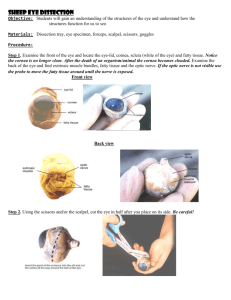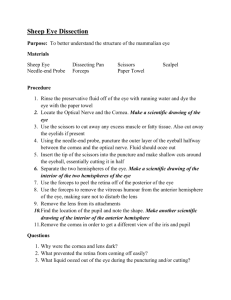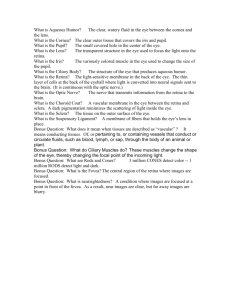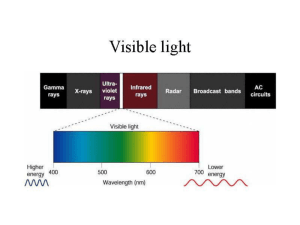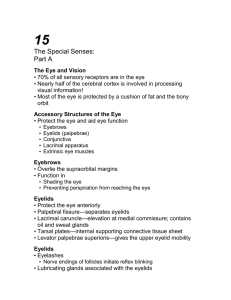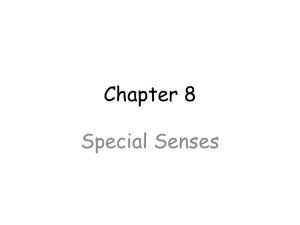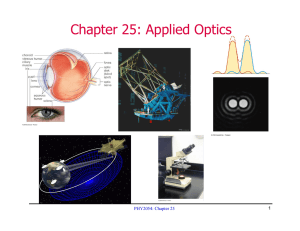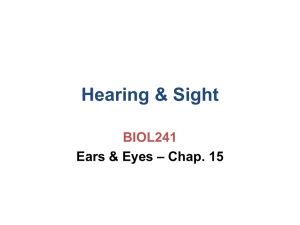crystalline lens
advertisement
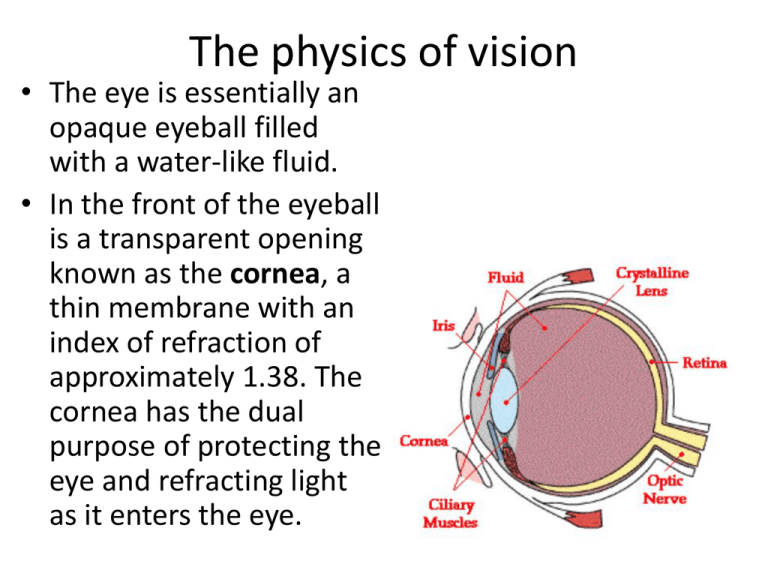
The physics of vision • The eye is essentially an opaque eyeball filled with a water-like fluid. • In the front of the eyeball is a transparent opening known as the cornea, a thin membrane with an index of refraction of approximately 1.38. The cornea has the dual purpose of protecting the eye and refracting light as it enters the eye. The physics of vision • After light passes through the cornea, a portion of it passes through an opening known as the pupil, which is merely an opening. The pupil is the black portion; the size of the pupil opening can be adjusted by the dilation of the iris. The iris is the colored part of the eye The physics of vision • Light then enters the crystalline lens. The crystalline lens has an index of refraction of roughly 1.40. The lens is attached to the ciliary muscles. These muscles relax and contract in order to change the shape of the lens. By carefully adjusting the lenses shape, the ciliary muscles assist the eye in the critical task of producing an image on the back of the eyeball. The physics of vision • The inner surface of the eye is known as the retina. The retina contains the rods and cones. An adult eye is typically equipped with up to 120 million rods that detect the intensity of light and about 6 million cones that detect the frequency of light. These rods and cones send nerve impulses to the brain. The nerve impulses travel through a network of nerve cells. There are as many as one million neural pathways from the rods and cones to the brain. This network of nerve cells is bundled together to form the optic nerve on the very back of the eyeball. The physics of vision • The cornea and lens serve to refract light and focus an image of the object on the retina • The cornea-lens system has a focal length of about 1.8cm. The physics of vision • the cornea-lens system is able to change its focal length. The ciliary muscles contract and relax, changing the shape of the lens. This allows the eye to change its focal length and focus images of objects that are both close up and far away. The physics of vision • the lens of the eye assumes a large curvature (short focal length) to bring nearby objects into focus and a flatter shape (long focal length) to bring a distant object into focus. Vision problems usually arise when the eye is unable to change the shape of the lens and the image is no longer focused on the retina. Accurate vision Nearsighted Correction Far sighted correction Homework • To form an image, light passes through FIVE different media [including air] in the eye, each with a different index of refraction. Draw a cross sectional view of the eye and label each of the 5 media and the retina. If incident light strikes the eye at 10⁰, then travels through each of the media, at what angle (from the normal!) will it strike the retina at the back of the eye? • nair = 1.00 • n2 = 1.38 (cornea) • n3 = 1.33 (aqueous humor) • n4 = 1.4 (lens) • n5 = 1.34 (vitreous humor) • Retina



